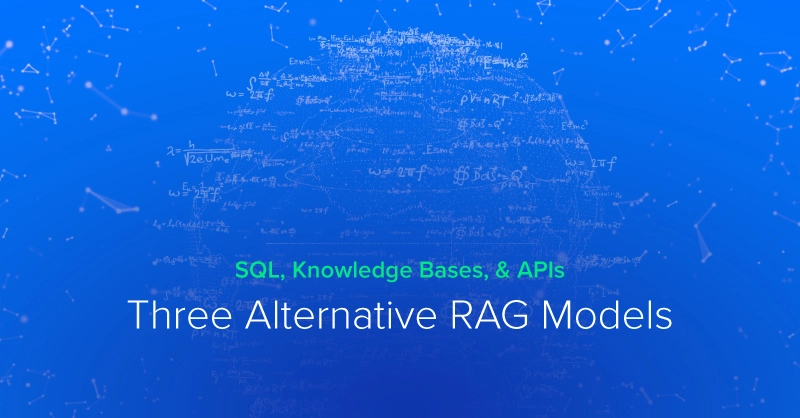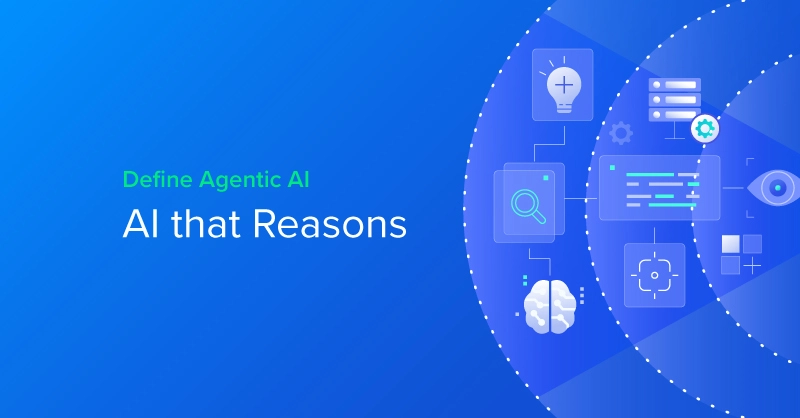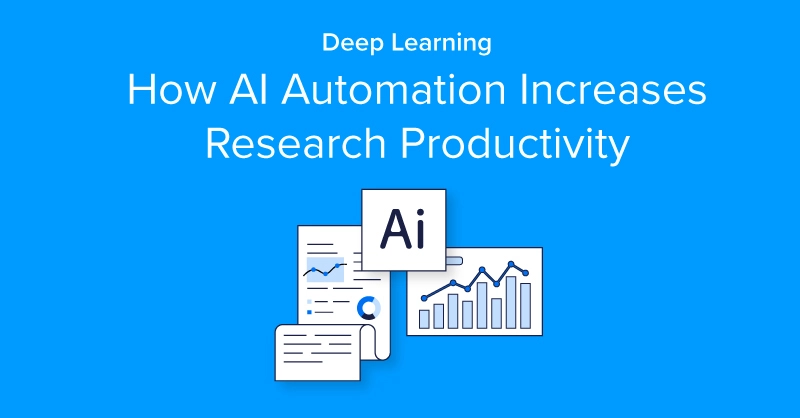
What is Artificial Intelligence (AI)?
There are many sources which give similar answers to the question, “What is AI?”. By the 1950’s, there were many scientists, mathematicians and philosophers that were looking into the concept of Artificial Intelligence. One such person was Alan Turing, who to this day is considered by many to be the Father of Artificial Intelligence.
He formed the idea and mathematical and logical reasoning behind the concept of machine intelligence wherein machines and computers would be able to replicate the behavior of humans and their intelligence. His paper Computing Machinery and Intelligence outlines his logic for the start of artificial intelligence. Fast forward 70 years into the future and we are now in a world where computers are able to converse with humans, albeit with limitations, but this is the progress we see as our world progresses to a more sophisticated AI.
Some definitions of AI include:
“The design and development of computer systems that have the knowledge and skills required to perform the tasks which usually require human intelligence to undertake” –AILab
“The ability of a digital computer or computer-controlled robot to perform tasks commonly associated with intelligent beings.” –Britannica
“In computer science, the term artificial intelligence (AI) refers to any human-like intelligence exhibited by a computer, robot, or other machine. In popular usage, artificial intelligence refers to the ability of a computer or machine to mimic the capabilities of the human mind—learning from examples and experience, recognizing objects, understanding and responding to language, making decisions, solving problems—and combining these and other capabilities to perform functions a human might perform, such as greeting a hotel guest or driving a car.” –IBM
Currently, What is the Most Advanced AI?
In 2020 we saw two big achievements in the race towards true artificial intelligence. OpenAI introduced GPT-3, and Google’s DeepMind released AlphaFold 2. Both of these organizations are racing to research, create and advance the role of artificial intelligence within our society. There are many others making advancements in AI, but GPT-3 and AlphaFold 2 were two of the most notable in 2020.
Human-Computer Interaction is now further along thanks to GPT-3, which can allow us to converse with computers regarding more specialized topics. For AlphaFold 2, 2020 was the year in which the world was engulfed in the COVID-19 pandemic and hundreds of pharmaceutical giants were on a mission to find a vaccine. AlphaFold 2 could very well be what helps scientists get there faster, and to help them understand diseases more quickly on a molecular level which will help to save future lives.
Language Processing with GPT-3
With GPT-3, scientists were able to train an AI model to converse with humans, and to read and write texts. This astounding development was GPT-3 (aka, Generative Pre-trained Transformer 3) developed by OpenAI. For years people have been fascinated with talking to humanoid robots in their native language, and believe this to be a critical milestone to reach with AI. GPT-3 can process texts in many languages better than its predecessor GPT-2, thanks to its model having 175 billion parameters (the values that a neural network tries to optimize during training), compared with GPT-2’s now meager 1.5 billion.
A 50 Year Challenge Broken with AlphaFold 2
Scientists from Google’s DeepMind were able to create AlphaFold 2 which has been hyped to be one of the biggest breakthroughs in the field of medical science and biology. The model can detect and derive the 3D protein structures of amino acids which could potentially increase the rate at which humans can understand diseases and increase the rate of pharmaceutical manufacturing. Never before in the last century has it been more important for the field of medicine. AI is perfect for assisting in the medical industry: modeling proteins on a molecular level; comparing medical images and finding patterns or anomalies faster than a human; and countless other opportunities to advance drug discovery and clinical processes. Scientists can spend days, months and even years trying to understand the DNA of a new disease, but can now save time with an assist from AI. Breakthroughs like AlphaFold 2 need to continue for us to advance our understanding in a world filled with so much we have yet to understand.
What AI Trends Will We See In 2021?
Many of these are a continuation from previous years and are being tackled on many sides by many people, companies, universities and other research institutions.
The following trends are what we are likely to see in 2021:
Voice and Language Driven AI

In 2020, we saw economies grind to a halt and businesses and schools shut down. Businesses had to adopt a remote working structure in a matter of days or weeks to cope with the rapid spread of the COVID-19 pandemic. This has created a new focus on voice and language driven AI to reduce the amount of touch based technology.
AI and Cloud Adoption
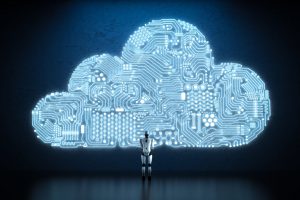
AI and the cloud go together in today’s technological ventures like peas and carrots. Digital assistants like Apple Siri, Google Home and Amazon Alexa have penetrated every aspect of our lives, from industries to communities and even our homes. Tasks such as ordering online, using a household fixture/appliance, making an appointment, listening to music, asking a question, and even communicating with someone over text or calling them directly can now be done using digital assistants that were created using artificial intelligence methods and cloud resources.
For businesses, cloud computing has offered, and continues to offer the ability to scale operations in an effective and efficient manner. Computing resources can be replicated with a click of a button to scale up or down as needed. Extra memory and faster processors can be added quickly; large amounts of data (i.e., gigabytes, petabytes and even higher) can be used in a single database by simply provisioning more memory; new software can be tested and used throughout an organization more efficiently; and so much more.
Cloud services such as IBM Cloud Computing, Amazon Web Services, Google Cloud, and Microsoft Azure all provide pre-trained and ready to use machine learning, deep learning and other artificial intelligence models, algorithms and services for businesses to use in their data analytics process. This gives even small businesses the ability to access powerful models that have been trained on millions and even billions of rows of data at a fraction of the cost. This way you can start off on a cloud based service until an on-premise based AI workstation, server or cluster makes more financial sense and allows you to keep your data under your full control. 2021 should find even more AI startups use cloud based services to get off the ground quickly so they can instead focus their financial capital on other essential business factors.
Interested in a deep learning solution?
Learn more about Exxact AI workstations starting at $3,700
AI & Martech
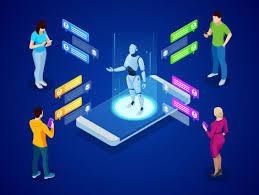
“Martech” is the combination of marketing and technology to achieve marketing goals and objectives. Marketing could be thought of as the data center of an organization in the past since it was this department’s job to collect, organize and translate data to internal stakeholders about their customers. Naturally as technology became more advanced and ingrained into society, it was an easy marriage to take marketing to the next level.
Today, recommender systems, digital marketing, conversational AI/chatbots are all prevalent on websites that offer a service for consumption. Wearable devices, IoT, sensor technology, Internet and website tracking cookies, and more help companies to collect vast amounts of data from everyday consumers which can then be used to understand consumer behavior better and to create new products and services. As privacy concerns continue to pick up steam, companies will be looking to find new avenues to pursue their marketing goals so they can continue to track consumer behavior.
AI & Healthcare

2020 was the year the world saw the worst pandemic since the Spanish flu over a century ago. The healthcare industry was overwhelmed (and still is) with medical professionals at risk of being infected, overworked and fatigued. With an overwhelmed healthcare system, it means patients with other illnesses and diseases that require emergency services cannot receive the treatment they need. Using AI, hospitals and healthcare systems will be looking to automate certain tasks, such as triage and diagnosing patients, or evaluate medical records of their patients in order to best assess high risk individuals or those who may have something that was missed by previous office visits. This can limit exposure to disease, give priority care to those who need it most, and flag anomalies that can lead to better disease prevention, among other things.
As previously mentioned, Google’s DeepMind created AlphaFold 2 which can recreate the 3D DNA structure of amino acids. This allows scientists to understand diseases more quickly and then rapidly begin the process of making new pharmaceuticals.
Radiologists and other medical professionals have already been using AI to help scan X-rays and MRIs to help find diseases and other problems. 2021 should find them leaning on AI more as accuracy rates continue to rise above what humans can see.
AI & Cybersecurity

Cybersecurity has been in the spotlight the past few years. There’ve been many public reports of hackers infiltrating large companies and stealing sensitive customer and insider information. These attacks will only continue to rise in 2021, including Ransomware that can lock a computer until you pay the hacker.
- IRS Tax Refund Fraud of $12million
- Microsoft had servers containing anonymized user analytics exposed on the web without adequate protection
- Estee Lauder had 440 million internal records exposed due to middleware failures
- Amazon’s AWS Cloud Computing service suffered a massive DDoS attack
- Google suffered a DDoS attack
Using artificial intelligence, algorithms can learn the ways of its user in order to decipher a pattern of behavior and normality. Once suspicious behavior is detected, it could either alert us or prevent the attacker from going further. This can be applied to a company or an individual user at home. People are now starting to adopt smart homes in which they can control daily tasks in their home using a digital assistant. Training AI algorithms to learn their user’s behavior can help prevent hackers from illegally gaining access to a person’s home. Using home devices is convenient, but can also leave a person vulnerable to cyber-attacks, which is where AI can assist in mitigating such risks. We will definitely need to lean on AI to help keep hackers at bay, as they rapidly adopt to new security techniques.
Why Has Artificial Intelligence (AI) Gained Popularity Recently?
A combination of factors has increased the need for quickly evolving AI. These include our own fast paced lives, digital assistants such as Google Home and Amazon Alexa, remote working opportunities, a larger focus on long term health, and an abundance of data and information being available. Our society is quickly learning how to fit AI into every corner of our daily existence.
Many people now have wearable devices, most notably Fitbit’s and Apple Watches. Both are now used by individuals to measure their health status. An example like this shows that people are either looking or are willing to adopt new forms of technology that will bring more convenience into their lives, and better understand themselves and the world around them.
For companies, the creation of new powerful supercomputers and partnerships with research organizations create synergies that can lead to incredible innovations and inventions. Microsoft announced that they will partner with OpenAI on new initiatives using Microsoft supercomputers to train incredible large AI models with the infrastructure available on their Azure platform. Collaborations like these only make the path to discovering new forms of artificial intelligence more viable.
For individual consumers, having digital assistants such as Siri, Alexa and Google Home, make life more convenient for them. The initial motivations for technological advancement has always been to make life easier and more convenient. As we rely more on AI devices, we become more dependent and more open to new ways of making our lives even easier. The demand is more likely to increase as AI adoption grows and companies can prove to consumers that their AI technology can enrich their lives (hello robo-taxis and self-driving cars!).
Artificial Intelligence Research Is Ongoing
Artificial intelligence is a concept that continues to reach more people, and continues to evolve thanks to the army of researchers, scientists, engineers and entrepreneurs devoted to advancing the field and bringing it to the masses.
2021 looks like it will be yet another year of experimentation and potential breakthroughs that will build upon the works of previous years, and new innovations may surprise us as new challenges continue to pop up.
OpenAI has given us the biggest leap in Natural Language Processing in 2020. However, this AI model required an enormous amount of compute resources. Microsoft now plans to help OpenAI with a collaboration to use Microsoft Supercomputers to build even more powerful and robust AI models for business and consumers. There will most likely be more emphasis on AI to also help us optimize and reduce power consumption of these data hungry machines.
Google’s DeepMind, AI for Good by Microsoft, Facebook AI, Intel’s University Research & Collaboration Office (URC), NVIDIA AI and OpenAI are just a few of the best known companies and organizations that are driving AI research. They have no qualms about forming collaborations, educating the next generation and finding the best and brightest minds to supplement that work. Partnering with institutes, universities, and companies from across the globe allows AI research to advance rapidly as the best minds help solve problems relating to health, poverty, education, environment, and everything else that touches our lives each day.
2021 will truly be a year to watch closely.

Top 5 Artificial Intelligence (AI) Trends for 2021
What is Artificial Intelligence (AI)?
There are many sources which give similar answers to the question, “What is AI?”. By the 1950’s, there were many scientists, mathematicians and philosophers that were looking into the concept of Artificial Intelligence. One such person was Alan Turing, who to this day is considered by many to be the Father of Artificial Intelligence.
He formed the idea and mathematical and logical reasoning behind the concept of machine intelligence wherein machines and computers would be able to replicate the behavior of humans and their intelligence. His paper Computing Machinery and Intelligence outlines his logic for the start of artificial intelligence. Fast forward 70 years into the future and we are now in a world where computers are able to converse with humans, albeit with limitations, but this is the progress we see as our world progresses to a more sophisticated AI.
Some definitions of AI include:
“The design and development of computer systems that have the knowledge and skills required to perform the tasks which usually require human intelligence to undertake” –AILab
“The ability of a digital computer or computer-controlled robot to perform tasks commonly associated with intelligent beings.” –Britannica
“In computer science, the term artificial intelligence (AI) refers to any human-like intelligence exhibited by a computer, robot, or other machine. In popular usage, artificial intelligence refers to the ability of a computer or machine to mimic the capabilities of the human mind—learning from examples and experience, recognizing objects, understanding and responding to language, making decisions, solving problems—and combining these and other capabilities to perform functions a human might perform, such as greeting a hotel guest or driving a car.” –IBM
Currently, What is the Most Advanced AI?
In 2020 we saw two big achievements in the race towards true artificial intelligence. OpenAI introduced GPT-3, and Google’s DeepMind released AlphaFold 2. Both of these organizations are racing to research, create and advance the role of artificial intelligence within our society. There are many others making advancements in AI, but GPT-3 and AlphaFold 2 were two of the most notable in 2020.
Human-Computer Interaction is now further along thanks to GPT-3, which can allow us to converse with computers regarding more specialized topics. For AlphaFold 2, 2020 was the year in which the world was engulfed in the COVID-19 pandemic and hundreds of pharmaceutical giants were on a mission to find a vaccine. AlphaFold 2 could very well be what helps scientists get there faster, and to help them understand diseases more quickly on a molecular level which will help to save future lives.
Language Processing with GPT-3
With GPT-3, scientists were able to train an AI model to converse with humans, and to read and write texts. This astounding development was GPT-3 (aka, Generative Pre-trained Transformer 3) developed by OpenAI. For years people have been fascinated with talking to humanoid robots in their native language, and believe this to be a critical milestone to reach with AI. GPT-3 can process texts in many languages better than its predecessor GPT-2, thanks to its model having 175 billion parameters (the values that a neural network tries to optimize during training), compared with GPT-2’s now meager 1.5 billion.
A 50 Year Challenge Broken with AlphaFold 2
Scientists from Google’s DeepMind were able to create AlphaFold 2 which has been hyped to be one of the biggest breakthroughs in the field of medical science and biology. The model can detect and derive the 3D protein structures of amino acids which could potentially increase the rate at which humans can understand diseases and increase the rate of pharmaceutical manufacturing. Never before in the last century has it been more important for the field of medicine. AI is perfect for assisting in the medical industry: modeling proteins on a molecular level; comparing medical images and finding patterns or anomalies faster than a human; and countless other opportunities to advance drug discovery and clinical processes. Scientists can spend days, months and even years trying to understand the DNA of a new disease, but can now save time with an assist from AI. Breakthroughs like AlphaFold 2 need to continue for us to advance our understanding in a world filled with so much we have yet to understand.
What AI Trends Will We See In 2021?
Many of these are a continuation from previous years and are being tackled on many sides by many people, companies, universities and other research institutions.
The following trends are what we are likely to see in 2021:
Voice and Language Driven AI

In 2020, we saw economies grind to a halt and businesses and schools shut down. Businesses had to adopt a remote working structure in a matter of days or weeks to cope with the rapid spread of the COVID-19 pandemic. This has created a new focus on voice and language driven AI to reduce the amount of touch based technology.
AI and Cloud Adoption

AI and the cloud go together in today’s technological ventures like peas and carrots. Digital assistants like Apple Siri, Google Home and Amazon Alexa have penetrated every aspect of our lives, from industries to communities and even our homes. Tasks such as ordering online, using a household fixture/appliance, making an appointment, listening to music, asking a question, and even communicating with someone over text or calling them directly can now be done using digital assistants that were created using artificial intelligence methods and cloud resources.
For businesses, cloud computing has offered, and continues to offer the ability to scale operations in an effective and efficient manner. Computing resources can be replicated with a click of a button to scale up or down as needed. Extra memory and faster processors can be added quickly; large amounts of data (i.e., gigabytes, petabytes and even higher) can be used in a single database by simply provisioning more memory; new software can be tested and used throughout an organization more efficiently; and so much more.
Cloud services such as IBM Cloud Computing, Amazon Web Services, Google Cloud, and Microsoft Azure all provide pre-trained and ready to use machine learning, deep learning and other artificial intelligence models, algorithms and services for businesses to use in their data analytics process. This gives even small businesses the ability to access powerful models that have been trained on millions and even billions of rows of data at a fraction of the cost. This way you can start off on a cloud based service until an on-premise based AI workstation, server or cluster makes more financial sense and allows you to keep your data under your full control. 2021 should find even more AI startups use cloud based services to get off the ground quickly so they can instead focus their financial capital on other essential business factors.
Interested in a deep learning solution?
Learn more about Exxact AI workstations starting at $3,700
AI & Martech

“Martech” is the combination of marketing and technology to achieve marketing goals and objectives. Marketing could be thought of as the data center of an organization in the past since it was this department’s job to collect, organize and translate data to internal stakeholders about their customers. Naturally as technology became more advanced and ingrained into society, it was an easy marriage to take marketing to the next level.
Today, recommender systems, digital marketing, conversational AI/chatbots are all prevalent on websites that offer a service for consumption. Wearable devices, IoT, sensor technology, Internet and website tracking cookies, and more help companies to collect vast amounts of data from everyday consumers which can then be used to understand consumer behavior better and to create new products and services. As privacy concerns continue to pick up steam, companies will be looking to find new avenues to pursue their marketing goals so they can continue to track consumer behavior.
AI & Healthcare

2020 was the year the world saw the worst pandemic since the Spanish flu over a century ago. The healthcare industry was overwhelmed (and still is) with medical professionals at risk of being infected, overworked and fatigued. With an overwhelmed healthcare system, it means patients with other illnesses and diseases that require emergency services cannot receive the treatment they need. Using AI, hospitals and healthcare systems will be looking to automate certain tasks, such as triage and diagnosing patients, or evaluate medical records of their patients in order to best assess high risk individuals or those who may have something that was missed by previous office visits. This can limit exposure to disease, give priority care to those who need it most, and flag anomalies that can lead to better disease prevention, among other things.
As previously mentioned, Google’s DeepMind created AlphaFold 2 which can recreate the 3D DNA structure of amino acids. This allows scientists to understand diseases more quickly and then rapidly begin the process of making new pharmaceuticals.
Radiologists and other medical professionals have already been using AI to help scan X-rays and MRIs to help find diseases and other problems. 2021 should find them leaning on AI more as accuracy rates continue to rise above what humans can see.
AI & Cybersecurity

Cybersecurity has been in the spotlight the past few years. There’ve been many public reports of hackers infiltrating large companies and stealing sensitive customer and insider information. These attacks will only continue to rise in 2021, including Ransomware that can lock a computer until you pay the hacker.
- IRS Tax Refund Fraud of $12million
- Microsoft had servers containing anonymized user analytics exposed on the web without adequate protection
- Estee Lauder had 440 million internal records exposed due to middleware failures
- Amazon’s AWS Cloud Computing service suffered a massive DDoS attack
- Google suffered a DDoS attack
Using artificial intelligence, algorithms can learn the ways of its user in order to decipher a pattern of behavior and normality. Once suspicious behavior is detected, it could either alert us or prevent the attacker from going further. This can be applied to a company or an individual user at home. People are now starting to adopt smart homes in which they can control daily tasks in their home using a digital assistant. Training AI algorithms to learn their user’s behavior can help prevent hackers from illegally gaining access to a person’s home. Using home devices is convenient, but can also leave a person vulnerable to cyber-attacks, which is where AI can assist in mitigating such risks. We will definitely need to lean on AI to help keep hackers at bay, as they rapidly adopt to new security techniques.
Why Has Artificial Intelligence (AI) Gained Popularity Recently?
A combination of factors has increased the need for quickly evolving AI. These include our own fast paced lives, digital assistants such as Google Home and Amazon Alexa, remote working opportunities, a larger focus on long term health, and an abundance of data and information being available. Our society is quickly learning how to fit AI into every corner of our daily existence.
Many people now have wearable devices, most notably Fitbit’s and Apple Watches. Both are now used by individuals to measure their health status. An example like this shows that people are either looking or are willing to adopt new forms of technology that will bring more convenience into their lives, and better understand themselves and the world around them.
For companies, the creation of new powerful supercomputers and partnerships with research organizations create synergies that can lead to incredible innovations and inventions. Microsoft announced that they will partner with OpenAI on new initiatives using Microsoft supercomputers to train incredible large AI models with the infrastructure available on their Azure platform. Collaborations like these only make the path to discovering new forms of artificial intelligence more viable.
For individual consumers, having digital assistants such as Siri, Alexa and Google Home, make life more convenient for them. The initial motivations for technological advancement has always been to make life easier and more convenient. As we rely more on AI devices, we become more dependent and more open to new ways of making our lives even easier. The demand is more likely to increase as AI adoption grows and companies can prove to consumers that their AI technology can enrich their lives (hello robo-taxis and self-driving cars!).
Artificial Intelligence Research Is Ongoing
Artificial intelligence is a concept that continues to reach more people, and continues to evolve thanks to the army of researchers, scientists, engineers and entrepreneurs devoted to advancing the field and bringing it to the masses.
2021 looks like it will be yet another year of experimentation and potential breakthroughs that will build upon the works of previous years, and new innovations may surprise us as new challenges continue to pop up.
OpenAI has given us the biggest leap in Natural Language Processing in 2020. However, this AI model required an enormous amount of compute resources. Microsoft now plans to help OpenAI with a collaboration to use Microsoft Supercomputers to build even more powerful and robust AI models for business and consumers. There will most likely be more emphasis on AI to also help us optimize and reduce power consumption of these data hungry machines.
Google’s DeepMind, AI for Good by Microsoft, Facebook AI, Intel’s University Research & Collaboration Office (URC), NVIDIA AI and OpenAI are just a few of the best known companies and organizations that are driving AI research. They have no qualms about forming collaborations, educating the next generation and finding the best and brightest minds to supplement that work. Partnering with institutes, universities, and companies from across the globe allows AI research to advance rapidly as the best minds help solve problems relating to health, poverty, education, environment, and everything else that touches our lives each day.
2021 will truly be a year to watch closely.

